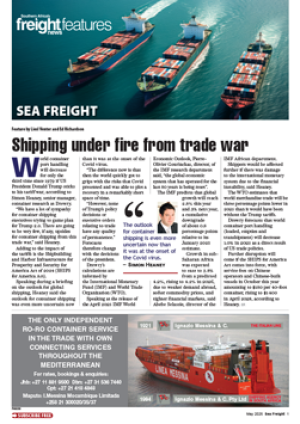A targeted marketing campaign is paying off for Hammar SA as growing interest in its range of customised sidelifters translates into firm orders.
And with a chassis built to align with South African regulations, the machines are capable of carrying high-cubes without exceeding the 4.3m height restriction which becomes mandatory in January 2019. The latest arrival is a customised machine delivered to Jacobs Transport in Alberton.
“For Jacobs, versatility was a critical element,” Hammar SA area sales manager Mats Blomberg told FTW. “We therefore designed it so that the chassis of the trailer could be adjustable in length enabling them to load 10ft, 20ft, 40ft and 45ft containers – which is unique for South Africa.” According to Blomberg the more standardised machines are highly competitive.
“Our trailers are much lighter – up to 3 000 kilograms – than competitor machines, which means you have extra payload. Customisation, however, needs new engineering so it’s more expensive.”
And while the Hammar brand may be relatively new to South Africa, there is a sidelifter culture in southern Africa, according to Blomberg. “For example, there are more than 120 Hammar sidelifters working in Angola. They saw the benefits of the concept and used it to their advantage.” The sidelifter should not, however, be viewed in isolation.
“It’s part of the bigger logistics picture. It’s all about changing the mindset,” says Blomberg, “and creating a logistics chain that is smarter and more efficient in terms of time and cost.” Instead of using a mobile crane or a forklift to load and offload containers, a sideloader allows the transporter to drop off empties at the warehouse where he can load full containers from the ground, take them to the port, pick up empties and return to the warehouse.
“If you can sell the idea to a customer and he can calculate that he can cuts costs by R 30-40 000 a month by changing the way he works then this concept is a win win. But old habits die hard.” Volvo’s truck factory in Gothenburg is a good example of how lateral thinking produced major savings. “They had only 10 ramps and, with loads of trucks coming in, there were long queues. Volvo hardened the ground of a field close by and told transporters to come in with sideloaders and put down the containers on the field. That way they could be offloaded as required, saving time and improving efficiency.
“Many factories work with loading ramps because that’s what they’re used to. The sideloader option, however, provides a far more efficient and cost-effective alternative,” says Blomberg. “It offloads the container onto the ground and lifts it from the ground. There’s no need to have several extra trailers loaded with containers parked at customer sites. You are not dependent on a third party to supply mobile cranes or other lifting equipment. With the sidelifter you do the lifting yourself at site from the ground or transfer from rail wagons or other trailers.”
INSERT
Our trailers are much lighter — up to 3 000 kilograms — than competitor machines, which means you have extra payload. – Mats Blomberg
CAPTION
Hammar SA's sidelifters in action.

